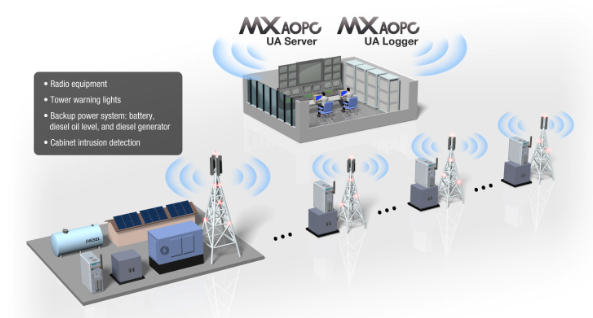Modern SCADA systems are quickly adopting Industrial Internet of Things (IIoT) technologies, such as cloud services or pub/sub protocols, to collect more data from monitored systems. The fact that the amount of data involved is expanding at an ever-increasing rate means that today’s SCADA systems must manage thousands of times more data than traditional SCADA systems from a decade or two ago.

*OEE identifies the percentage of resource-usage time that is truly productive.
Smart Data Acquisition Enhances Big Data Integrity
For many years, “updating data by polling” has been the industry standard for SCADA communication between the server and clients. However, polling IIoT devices can result in the collection of tons of worthless data from thousands of sensors, leading to high data storage costs and time consuming data analyses. When sensors spit out data at a frequency much smaller than the polling interval, such as is the case when monitoring a machine’s ON/OFF status, “updating by exception” can reduce the amount of data storage needed and increase the efficiency of data analysis.
When used together, Moxa’s ioLogik 2500 series, MX-AOPC UA Server, and MX-AOPC UA Logger form a turnkey solution that provides real-time data acquisition, data buffering in local storage devices, and automatic data completeness after network failures. MX-AOPC UA Logger imports data from MX-AOPC UA Server into a database in real time. When the network fails and then recovers, the logger automatically retrieves data logs, with timestamp matching the duration of the disconnection, from the data buffers of specific ioLogik 2500 devices, and then pushes the supplementary data into the database.
Case Study: Radio Station Equipment Monitoring
Many leading wireless carriers throughout the world are looking for cost-effective and efficient ways to manage remote, unmanned sites. The traditional method of sending maintenance personnel on regular, onsite visits is both inconvenient and costly. The obvious solution is to make it possible for maintenance engineers to remotely monitor and manage the unmanned sites efficiently, and proactively maintain and control their systems to prevent system downtime. In addition, since interruptions in wireless transmission are inevitable, during the disconnection period, data is saved to a local RTU. When the wireless network is back online, the data can be sent back to the central database automatically.
One solution provider uses Moxa’s ioLogik 2542-HSPA-T, MX-AOPC UA Server, and MX-AOPC UA Logger combined with their own SCADA software on a private cloud to provide a nationwide solution for radio station equipment monitoring. With this solution, engineers can monitor:
- radio equipment
- lighting on radio towers to ensure compliance with flight safety regulations
- the backup power system, including the battery, diesel oil level, and diesel generator
- cabinet intrusion detection indicators, equipment rooms, and areas that are off limits
In one application, about 100 unmanned sites are being monitored. One ioLogik 2542-HSPA-T is installed at each site. Each ioLogik monitors 12 analog inputs and updates the data to MX-AOPC UA Server using a percentage change strategy. The ioLogik also monitors 8 digital inputs and updates data to the server by exception, resulting in a dramatic reduction in the amount of data that needs to be transmitted. In addition, the amount of storage space required at the central site is greatly reduced. Whenever the connection between the ioLogik 2542-HSPA-T and MX-AOPC UA Server gets disconnected, it saves the data in its local storage drive for backup. Once the connection is back up and running, the MX-AOPC UA Logger automatically retrieves the data from the local storage drive and pushes the data to the central database.
Moxa’s ioLogik 2542-HSPA-T, MX-AOPC UA Server, and MX-AOPC UA Logger not only make it easy for the solution provider to transmit data to the database in real time, it provides complete data by automatically pushing supplementary data, stored locally during disconnection periods, to the central database. The system not only enhances data integrity, it also provides SCADA engineers with prompt and accurate data analysis.

For more information, download our white paper: How OPC UA Software Enhances Big Data Integrity for IIoT SCADA Systems.